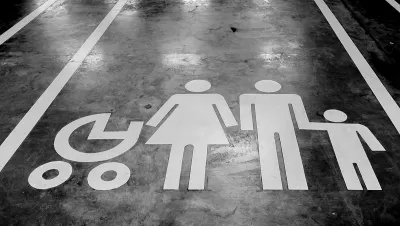A growing number of signs show major shifts in U.S. population growth—most emerged before the pandemic.

"Growth in the number of U.S. households during the 2010s slowed to its lowest pace in history, according to a Pew Research Center analysis of newly released 2020 census data."
An article by Richard Fry, Jeffrey S. Passel, and D'vera Chon shares news of the new analysis, explaining both causes and consequences for the data. Starting with causes, the article lists several long-term demographic trends:
- "A fundamental driver of household growth is population growth. The population residing in households (that is, those who do not live in group quarters such as dorms, prisons or nursing homes) grew by only 7.5% in the last decade, the slowest population growth since the 1930s."
- "Beyond population growth, another demographic trend also slows growth in the number of households: Multigenerational family living has been increasing. In 2016, 20% of the U.S. population lived in multigenerational family households, up from 12% in 1980."
Other trends like the share of Americans living alone are also explained in the article.
The article is less specific about the consequences of these trends, but predicts that the subpar growth of households will impact the demand for housing and durable goods like furniture and appliances. "The slowdown in economic growth over the 2010s is partly a reflection of weak household formation and low levels of home building," according to the article.
More from Planetizen on 2020 Census data findings:
- Where New Asian Residents Are Transforming New York City (October 2021)
- Census Data Reveal Increasing Density in the U.S.—Reversing a Two-Decade Trend (September 2021)
- News Brief: Census 2020 Population Data (August 2021)
- 2020 Population Growth Rates for the 50 Biggest U.S. Cities (July 2021)
FULL STORY: U.S. household growth over last decade was the lowest ever recorded

Planetizen Federal Action Tracker
A weekly monitor of how Trump’s orders and actions are impacting planners and planning in America.

Restaurant Patios Were a Pandemic Win — Why Were They so Hard to Keep?
Social distancing requirements and changes in travel patterns prompted cities to pilot new uses for street and sidewalk space. Then it got complicated.

Map: Where Senate Republicans Want to Sell Your Public Lands
For public land advocates, the Senate Republicans’ proposal to sell millions of acres of public land in the West is “the biggest fight of their careers.”

Maui's Vacation Rental Debate Turns Ugly
Verbal attacks, misinformation campaigns and fistfights plague a high-stakes debate to convert thousands of vacation rentals into long-term housing.

San Francisco Suspends Traffic Calming Amidst Record Deaths
Citing “a challenging fiscal landscape,” the city will cease the program on the heels of 42 traffic deaths, including 24 pedestrians.

California Homeless Arrests, Citations Spike After Ruling
An investigation reveals that anti-homeless actions increased up to 500% after Grants Pass v. Johnson — even in cities claiming no policy change.
Urban Design for Planners 1: Software Tools
This six-course series explores essential urban design concepts using open source software and equips planners with the tools they need to participate fully in the urban design process.
Planning for Universal Design
Learn the tools for implementing Universal Design in planning regulations.
Heyer Gruel & Associates PA
JM Goldson LLC
Custer County Colorado
City of Camden Redevelopment Agency
City of Astoria
Transportation Research & Education Center (TREC) at Portland State University
Camden Redevelopment Agency
City of Claremont
Municipality of Princeton (NJ)




























